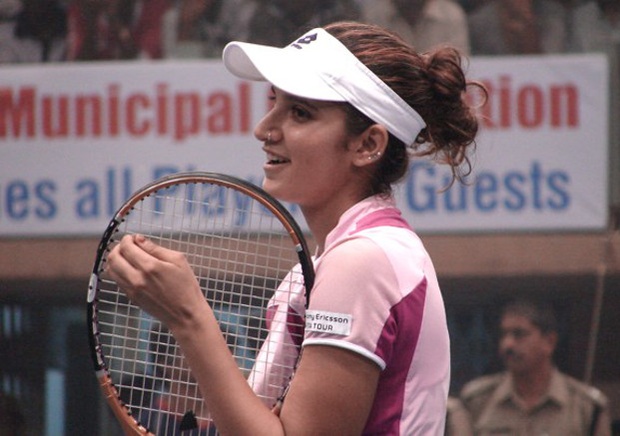
“When I was growing up I would go to tennis and people would come up to my parents and they would ridicule them and say she’s a girl from Hyderabad, you think she is going to play Wimbledon? But obviously my parents didn’t care.”— Sania Mirza, to NDTV, while discussing the high rate of female infanticide in her native India.
Mirza, now 27, is the best female player India has ever produced. She was ranked as high as No. 27 in singles (one career WTA title) and No. 7 in doubles. She’s the first Indian woman to have won a Grand Slam title (mixed doubles, at the Australian and French Opens). She’s also been relatively flamboyant and outspoken for a young Muslim lady from India.
She made her comments above during an interview in which one of the topics was the high rate of female infanticide in India—according to the United Nations, 12 million girls were aborted in India in the past two years, often because they were viewed as potential financial burdens.
Mirza went on to say, “For everything we achieve, why do we need a guy? . . . it’s our responsibility to try and educate people in India that having a girl is plus not a minus.”
Whatever the intent, her comment about not needing “a guy” surely got some people’s noses out of joint. But it wouldn’t be the first time her independent thoughts and actions stirred controversy.
In 2005, a Muslim scholar issued a fatwa regarding the skimpy tennis clothing Mirza (and all her peers) wear, saying it was not suited to Islam. She also faced prosecution under India’s Prevention of Insults to National Honour Act a few years ago, when she was photographed at the Hopman Cup resting her feet—and showing their soles—above an Indian flag. Her comments on safe sex once created a stir (she clarified her stance when the controversy erupted).
In fact, the collision of values was so strong at times that Mirza declared in 2008 that she would stop appearing in tournaments in India. If nothing else, security officials probably heaved a great sigh of relief; this was, after all, a Muslim woman who had played mixed doubles with a Jew, Shahar Peer. (Mirza returned to competition in India in 2010.)
India has provided tennis with a host of interesting characters, starting with Ramanathan Krishnan. He was a two-time Wimbledon semifinalist (1960 and ’61), and his son, Ramesh, was an ATP staple and three-time Grand Slam quarterfinalist in the 1980s. Vijay Amritraj (who had two brothers who also played professionally) won 16 singles titles and posted a career-high ranking of No. 16 in 1980. Then there’s pugnacious doubles genius Leander Paes, an eight-time Grand Slam men’s doubles winner.
All of them, and others, were more successful than Mirza. But none have been as colorful or controversial. Even Mirza’s wedding in 2010 caused a national uproar when it was confirmed shortly before her great day that her fiancé (Shoaib Malik) was already married. Malik obtained a divorce and wed Mirza five days later.
Like the lady said, who needs guys?
source: http://www.tennis.com / Tennis / Home> Pro Game> Commentary / by Peter Bodo / Friday – December 06th, 2013








